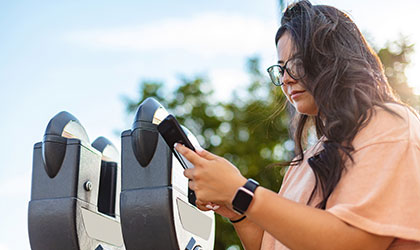A Look Inside Gen Z's Digital Wallet
- November 18, 2022

Gen Z grew up surrounded by technology and innovation regarding banking experiences. The use of cash has begun to slowly decline for all generations as ways to exchange value evolve. This concept has been referred to as “The Death of Money,” an idea that was initially formed in 1993 and is more prevalent today than ever.
As a Gen Zer, I rarely carry cash. I noticed many of my favorite shops refusing to accept cash and transitioning to digital-first payment models. While at a major league baseball game this summer, I went to buy a snack from the concession stand and tried to pay with cash, only for the cashier to tell me they no longer accept this form of payment. According to a study by Bloomberg, Gen Zers currently possess $360 billion in disposable income. That number will grow significantly as more Gen Zers join the workforce. With younger generations leading the charge by switching to digital payments, it should be a top priority for banks to tailor their services to digital trends.
Since 2020, contactless payments and digital wallets have grown significantly in popularity, especially among Gen Zers. In a study by the Financial Brand, less than half of the Gen Zers surveyed had a traditional bank account. Gen Z is embracing new money management tools and has relatively little enthusiasm for traditional banking options. According to another study by Business Insider, 96% of UK customers have made at least one contactless payment in the past year. Considering this data, it is safe to assume that — for financial institutions, — offering secure mobile payment options is paramount to retaining younger customers.
A buzzword in payment forms as of late has been ‘cryptocurrency.’ In a survey done by 451 Research, 33% of Gen Z has either bought, traded, or received cryptocurrency, compared to 20% of the overall population. Cryptocurrency can be used as an investment tool and a form of payment. These transactions are heavily publicized on social media and reach a large portion of the younger population. While cryptocurrencies are becoming more prevalent in banking/investing to Gen Zers today, other digital advancements are making rifts in the financial industry.
Why P2Ps appeal to Gen Zers
Peer-to-Peer (P2P) services such as PayPal, Venmo, Cashapp, and Zelle have become popular payment methods for Gen Zers. According to a study by The Financial Brand, 39% of Gen Zers use P2P payments, a 7% increase from before 2020. As a recent college graduate, I used digital banking apps daily to make and receive payments from my friends. I have seen countless other Gen Zers exchange value on similar platforms. The effects of new features, such as the Venmo card, have also started to gain traction. The Venmo card acts as a debit card, using your Venmo balance as payment.
When a group of friends dine at a restaurant, one person can pay for the entire meal using a Venmo card. Their dinner companions can now Venmo them for their individual meals, making it more efficient to settle the check. This has also been one of the many technological advances that Gen Z has begun to teach other generations to use. I have encouraged and taught my parents and grandparents how to use Venmo and experience ease and efficiency.
P2Ps appeal to Gen Zers because of their functionality, simplicity, low fees, and the absence of paperwork when creating an account. The only requirement to pay someone once you create your account is to know the person’s username. You are not required to give any bank information to pay someone or get paid. Venmo can also be seen as a social media platform, allowing your friends to see who you have paid and your caption for that payment. This level of personalization and interaction creates a lot of appeal for the app-friendly younger generations.
Many financial institutions have already started to act on this trend. For example, Bank of America partnered with Zelle to add a P2P payment to the Bank of America app, which proved beneficial to Bank of America, allowing customers to easily send money to peers. Partnering with payment apps or creating their own service could be an excellent way for banks to appeal to younger generations.
The benefits of BNPL
Buy Now Pay Later (BNPL) is a payment method in which a purchase is split into smaller payments (usually paid bi-weekly or monthly) with low-interest rates and no hard credit checks. Like P2P, BNPL has also gained traction among younger banking customers. This method has been heavily advertised by social media influencers. According to a study by Insider Intelligence, almost 75% of BNPL customers are Gen Zers. While many Gen Zers are tempted by this idea, studies have shown they highly value financial wellness. Many younger bankers fear taking on debt, but BNPL is trending among Gen Zers.
For traditional financial services institutions to get ahold of Gen Z, banks must move towards appealing to the younger generation’s digital preferences. Offering a wide array of services and payment options like P2P, BNPL, digital wallets, and contactless is key to retaining young customers. Making an investment to capture Gen Zers at the beginning of their careers will pay off in the future as the purchasing power of this generation grows and more high-net-worth individuals emerge.
Subscribe to our blog





